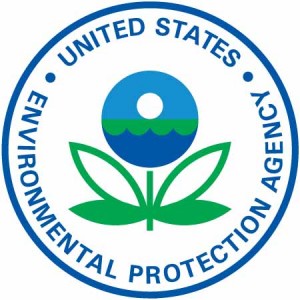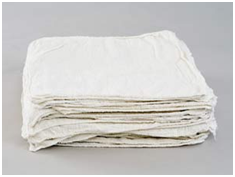 2013 Solvent-Contaminated Wipes Final Rule
2013 Solvent-Contaminated Wipes Final Rule
Used in combination with solvents, “wipes” are typically used for cleaning and other industrial applications by a variety of manufacturing facilities. Large quantities of both reusable wipes and disposable wipes are used daily and generators are faced with costly management issues once the wipes have reached the end of their useful life cycle. Specifically, soiled wipes that are contaminated with a solvent must be managed according to stringent rules established under the Resource Conservation and Recovery Act (RCRA).
During the 1980’s, the Environmental Protection Agency (EPA) was petitioned by U.S. industry requesting that EPA relax the regulations which govern the management of disposable and reusable solvent-contaminated wipes. Through risk analysis EPA investigated the appropriateness of publishing a final rule which would make consistent the existing hazardous waste management regulations based on the level of risk posed by solvent contaminated wipes. On July 31, 2013 EPA published such a final rule to modify the hazardous waste regulations with regards to the management of solvent-contaminated wipes. Generators of solvent-wipes, electing to meet the management conditions in the final rule, will not have to manage the wipes as a hazardous waste.
 What is a solvent-contaminated wipe? A solvent-contaminated wipe is a wipe (i.e. a shop towel, rag, pad, or swab made of wood pulp, fabric, cotton, polyester blends, or other material) that after use or after cleaning up a spill, contains a solvent that would be considered hazardous waste either because it is listed in the hazardous waste regulations, or because it exhibits the characteristic of ignitability. Solvent-contaminated wipes do not include wipes contaminated with hazardous waste other than solvents, or that exhibit the characteristic of toxicity, corrosivity, or reactivity due to contaminants other than solvents. What is a solvent-contaminated wipe? A solvent-contaminated wipe is a wipe (i.e. a shop towel, rag, pad, or swab made of wood pulp, fabric, cotton, polyester blends, or other material) that after use or after cleaning up a spill, contains a solvent that would be considered hazardous waste either because it is listed in the hazardous waste regulations, or because it exhibits the characteristic of ignitability. Solvent-contaminated wipes do not include wipes contaminated with hazardous waste other than solvents, or that exhibit the characteristic of toxicity, corrosivity, or reactivity due to contaminants other than solvents.
Source: EPA |
The EPA final rule, Conditional Exclusions From Solid Waste and Hazardous Waste for Solvent-Contaminated Wipes, modifies 40 CFR Parts 260 and 261. This rule is effective on January 31, 2014. The Federal Register link to the final rule is found here
To be excluded, solvent-contaminated wipes must be managed in closed, labeled containers and cannot contain free liquids when sent for cleaning or disposal. Facilities that generate solvent-contaminated wipes must comply with recordkeeping requirements (kept on-site) and may not accumulate wipes for longer than 180 days. Solvent-contaminated wipes must be managed in closed containers that are labeled “Excluded Solvent-Contaminated Wipes”.
As authorized by federal RCRA, many states operate their own hazardous waste state programs. Adoption of the new conditional exclusion is not required and certain states may continue to enforce the more stringent requirements of RCRA.
“EPA estimates that the final rule will result in a net savings of between $21.7 million and $27.8 million per year. This includes a net savings of $18.0 million per year in avoided regulatory costs and between $3.7 million and $9.9 million per year in other expected benefits, including: (1) pollution prevention and waste minimization benefits, (2) fire safety benefits, and (3) potential benefits to industrial laundries and dry cleaners from removal of the “waste” label for solvent-contaminated reusable wipes.”
Related Publication: 40 CFR (EPA)


